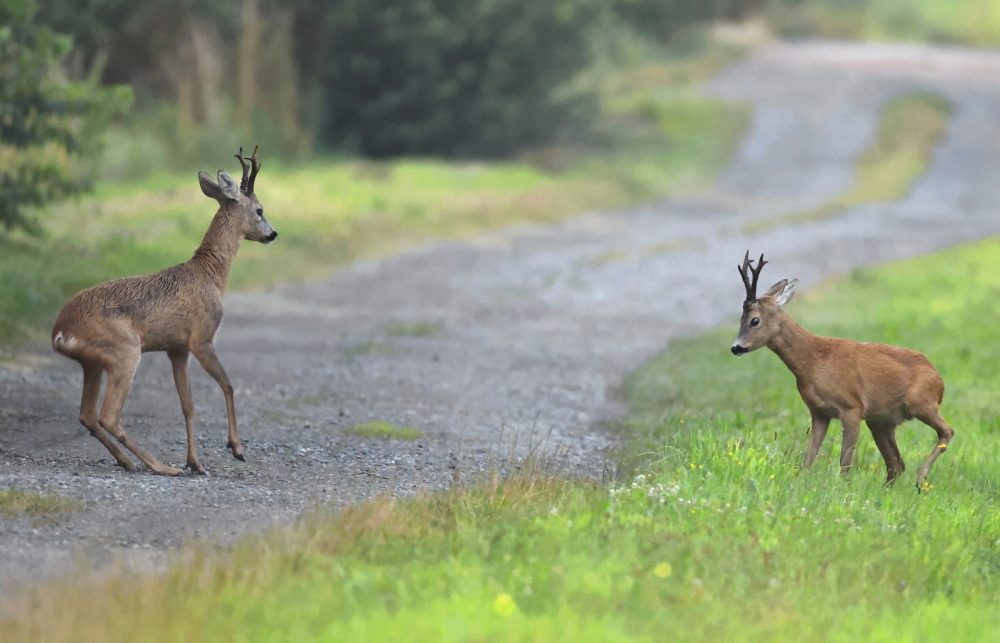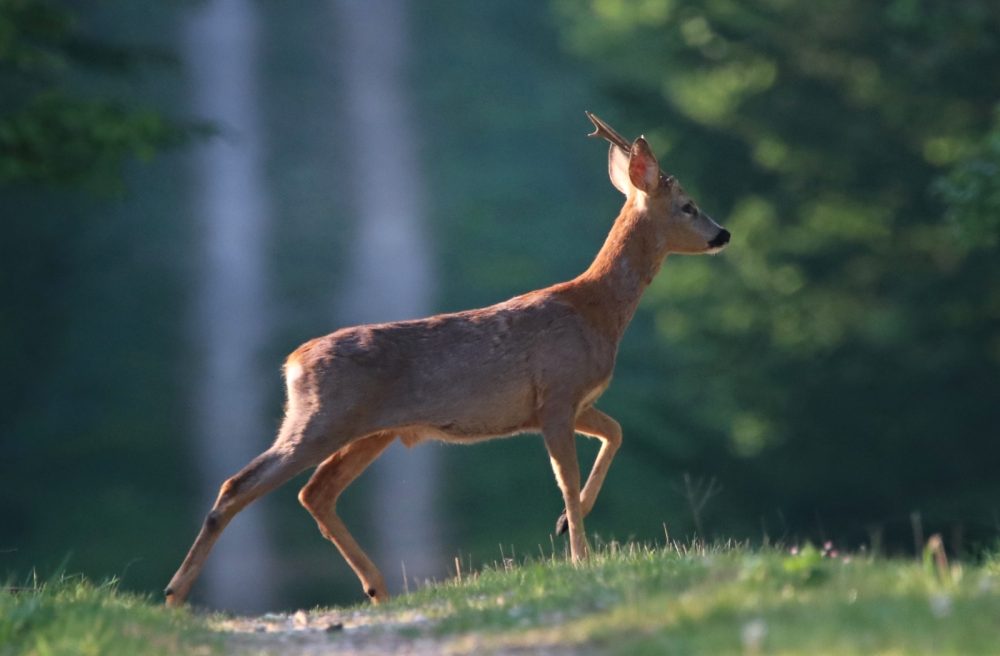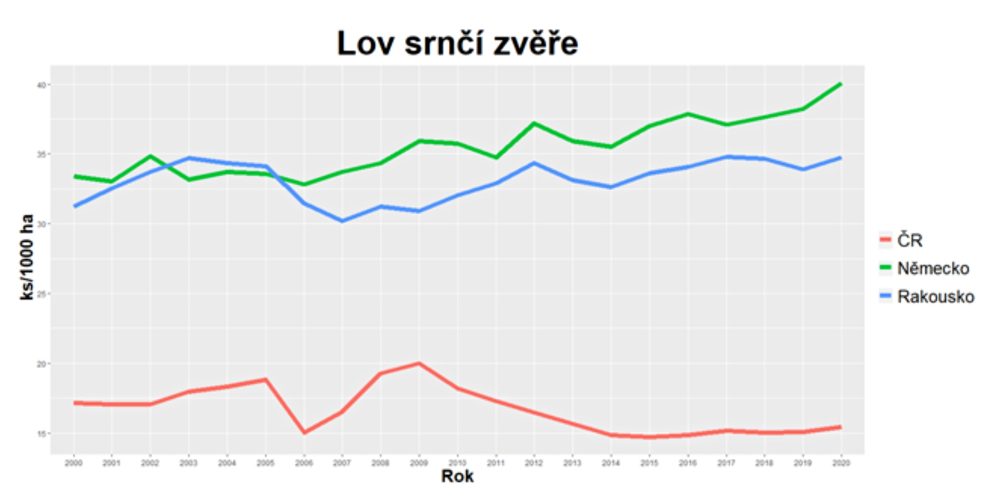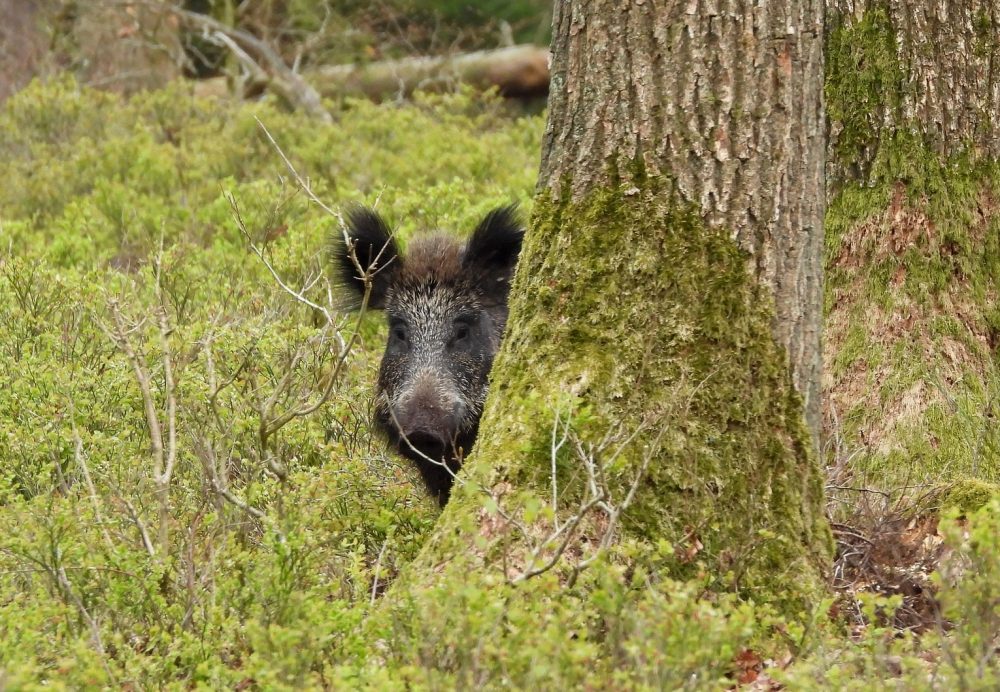Statement of FGMRI to determine the minimum area of hunting districts
The Czech Republic has been dealing with an increase in the number of ungulates for a long time, which manifests itself in negative impacts on forest ecosystems, agricultural crops and other land in the countryside. The Ministry of Agriculture responds to this unsustainable situation with the upcoming amendment to Act No. 449/2001 Coll., on hunting. The amendment in the form under discussion primarily presents a solution to the reduction of wild ungulate populations and, consequently, to the reduction of damage caused by game using tools for planning the minimum amount of hunting in hunting districts based on the degree of forest damage.
 At the same time, according to the amendment, the fulfilment of the hunting plan will be recorded by a control mechanism that will ensure the verifiable reporting of hunted pieces of game, which has not yet been satisfactorily resolved in the current version of the Act on Hunting. Despite these presented key tools for reducing the number of ungulates, the main debates are focused on reducing the minimum hunting area from the current 500 ha to the proposed 250 or even 115 hectares.
At the same time, according to the amendment, the fulfilment of the hunting plan will be recorded by a control mechanism that will ensure the verifiable reporting of hunted pieces of game, which has not yet been satisfactorily resolved in the current version of the Act on Hunting. Despite these presented key tools for reducing the number of ungulates, the main debates are focused on reducing the minimum hunting area from the current 500 ha to the proposed 250 or even 115 hectares.
But, how is the area of hunting districts, in which hunting management is implemented, related to the ecology of ungulates? In order to evaluate the biological needs of free-living ungulates, we analyzed the size of the home ranges of our domestic game species on the base of literature search of sources available in scientific databases.
We searched for relevant studies that deal with the spatial behaviour of game using telemetric tracking of marked individuals. In total, we managed to summarize 83 scientific publications, published between 1974 and 2022. In these publications, we searched for the stated size of the home range and then we simply calculated the average value for the given species of game.
The area of home ranges is influenced by a number of factors, such as the structure of the landscape in the place where the study was carried out, the altitude of these areas, the number of game populations or the principles of hunting management, including game feeding. Therefore, we included in the comparison of mainly studies from the region of Central Europe with a comparable character of the landscape and with a similar method of hunting management.
The largest area of the home range was found in the European red deer, which uses an area of 1,039 hectares, on average. Males usually have larger ranges and their area fluctuates throughout the year.
The wild boar has a somewhat smaller area of home ranges, which on average covers an area of 661 hectares. Differences are mainly influenced by the structure of the landscape here, the availability of food or the amount of shelter opportunities in the locality, where the monitored individual occurs.
 Among the native game species, the roe deer was also included in the analysis. It differs from the previously mentioned ungulates by its territorial behaviour. If he finds suitable conditions in a given place, his regions can only reach the lower tens of hectares. The average value is 82 ha and it is higher for roe deer in open agricultural countryside.
Among the native game species, the roe deer was also included in the analysis. It differs from the previously mentioned ungulates by its territorial behaviour. If he finds suitable conditions in a given place, his regions can only reach the lower tens of hectares. The average value is 82 ha and it is higher for roe deer in open agricultural countryside.
Therefore, the roe deer is the only cloven-hoofed animal that can be hunted and farmed in hunting areas of smaller areas, practically.
This state corresponds to the minimum hunting areas of our western neighbours. In neighbouring countries, the minimum hunting area is 150 ha (Germany) or even only 115 ha (Austria). But were these smaller huntings the reason for the reduction of roe deer numbers, as presented by the supporters of reducing the minimum area also in our conditions?
This question can be answered by comparing the amount of roe deer hunting with the mentioned neighbouring states. The available data for the last 20 years were converted to the number of roe deer hunted per 1000 ha, for an objective comparison.
From such a comparison, it is evident that while in the Czech Republic in recent years approximately 15 individuals per given unit of area have been hunted, Austrian hunters hunt between 30 and 35 individuals and German hunters hunt even between 35 and 40 individuals of roe deer.
In case of neighbouring countries, the graph shows an upward trend in hunting without significant declines, which would indicate a significant impact on the population and, consequently, a reduced reproductive capacity in the following years.
 Long-term stable, or even increasing, hunting in hunting districts of smaller areas corresponds to a multiple of the higher number of roe deer population (tribal states) in these countries.
Long-term stable, or even increasing, hunting in hunting districts of smaller areas corresponds to a multiple of the higher number of roe deer population (tribal states) in these countries.
On the base of the presented data, it is quite clear that the fragmentation of larger units with different approaches to hunting management, and therefore also with different interests of owners or users of individual hunting districts of smaller areas, results in a steadily higher number of ungulate game.
At the same time, the landscape of Austria and Germany better meets the biological needs of roe deer with regard to the smaller areas of land blocks in these countries, and thus also to greater diversity of cultivated crops, which is complemented by a mosaic of smaller woodlands. A suitable landscape structure is reflected in the smaller home ranges of roe deer.
In case of the Czech landscape, which is largely covered by larger land units with an area of several tens of hectares with a few crops, there will naturally be an increase in the seasonal concentration of ungulates in hunting with attractive crops (rape, cereals, corn), while in subsequent hunting game in different parts of the year may hardly occur with regard to agricultural management.
In case of an agricultural landscape, the enforced minimum hunting area of 115 ha may extend to only a few land blocks. However, the passage of game between hunts, the occurrence of damages and their reimbursement will be tied to individual hunts.
 For example, in the event of a reduction in the minimum area of hunting grounds, red deer individuals may move in the territory of more than 10 hunting districts, with different management interests, and effective hunting management will thus be very complicated, in practice, It will be difficult to fulfil the hunting plan not only in individual hunts, but also in the whole area. It is important to hunt according to the sex and age of the game, so that the necessary structure of the population is preserved, which is also prescribed for damage to forest stands.
For example, in the event of a reduction in the minimum area of hunting grounds, red deer individuals may move in the territory of more than 10 hunting districts, with different management interests, and effective hunting management will thus be very complicated, in practice, It will be difficult to fulfil the hunting plan not only in individual hunts, but also in the whole area. It is important to hunt according to the sex and age of the game, so that the necessary structure of the population is preserved, which is also prescribed for damage to forest stands.
Forestry and Game Management Research Institute has been dealing with the issue of the influence of game on forest ecosystems and agricultural cultures for a long time. At the same time, an attention is paid to other risks related to the increase in the population of ungulates, especially in connection with introduced species, i.e. Japanese sika, fallow deer and mouflon.
On the base of presented facts, it is absolutely obvious that the smaller area of hunting in Germany and Austria does not bring a reduction in the number of ungulate game.
Therefore, we perceive the mechanism of demonstrable reporting of pieces of hunted game as a decisive tool of the amendment being discussed, which will ensure an overview of the fulfilment of the established hunting plan with the possibility of its subsequent increase depending on the degree of forest damage, which is another proposed and completely fundamental change in the approach to hunting management.
These sub-parts of the amendment have the corresponding ambition to ensure the reduction of ungulate populations with the aim of achieving harmonization between the state of the forest, the agro-ecosystem and wildlife. Therefore, we recommend maintaining the current minimum area of hunting districts, on the base of stated factual arguments.
With this press release, we also join to the previously published expert opinions of the Czech Forestry Society dated February 16, 2023 and the Czech University of Life Sciences in Prague dated March 10, 2023, which are available here:
Tisková zpráva České lesnické společnosti (Press release of the Czech Forestry Society)
Odborné stanovisko FLD ČZU v Praze (Expert opinion of the Czech University of Life Sciences in Prague)
Contact: Ing. Jan Cukor, Ph.D., FGMRI (VÚLHM, v. v. i.); E-mail: cukor@vulhm.cz
